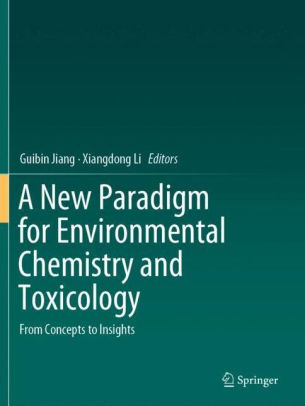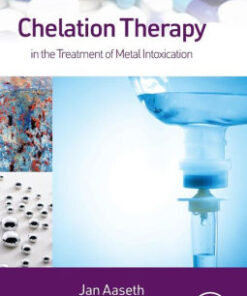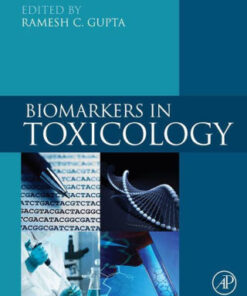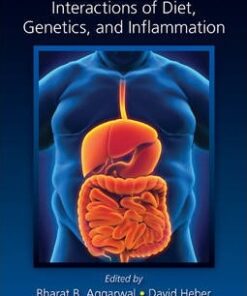(eBook) A New Paradigm for Environmental Chemistry and Toxicology by Jiang
$15.00
Download instantly A New Paradigm for Environmental Chemistry and Toxicology – From Concepts to Insights by Guibin Jiang, Xiangdong Li. It is ebook in PDF format.
ISBN-10: 9811394490 ISBN-13: 9789811394492
Preview
This is the PDF eBook version for A New Paradigm for Environmental Chemistry and Toxicology – From Concepts to Insights by Guibin Jiang, Xiangdong Li
Table of Contents
Part 1. New concepts linking environmental chemistry and toxicology
Chpater 1. Exposome: The totality of exposure
Author: Gary Miller, Columbia University, USA
Chpater 2. Adverse outcome pathway (AOP)
Author: Gerald Ankley, US Environmental Protection Agency, USA/ Jon Doering, US Environmental Protection Agency, USA
Chapter 3. Aggregate exposure pathway (AEP)
Author: Paul Price, Governmental Protection Agency, USA
Part 2. Insights into exposure sources, processes, and impacts
Chapter 4. Synchrotron-based techniques for metal speciation, bioavailability, and toxicity
Author: Chunying Chen, National Center for Nanoscience and Technology, China/ Yufeng Li, Nanjing University, China
Chpater 5. In situ passive sampling for monitoring environmental mixture exposures
Author: Derek Muir, Environment Canada, Canada
Chapter 6. In vivo SPME for bioanalysis in environmental monitoring and toxicology
Author: John Pawliszyn, Department of Chemistry, University of Waterloo, Canada
Chapter 7. Non-target analysis of the unknowns
Author: Julianne Hollander, Eawag, Dübendorf, Switzerland
Chapter 8. Multi-omics for systems understanding of environmental effects
Author: Xiaowei Zhang, Nanjing University, China
Part 3. Modelling and computational approaches for exposure, processes, and impacts
2.
Chapter 9. Global modelling of environmental and human exposures
Author: Frank Wania, University of Toronto, Canada
Chapter 10. High-throughput screening and hazard testing prioritization
Author: Menghang Xia, National Center for Advancing Translational Sciences, USA
Chapter 11. Mixture modelling and effect-directed analysis for identification of chemicals, mixtures and effects of concern
Author: Beate Escher, Helmholtz Centre for Environmental Research – UFZ, Germany/ Peta Neale, Griffith University, Australia
Chapter 12. Quantitative in vitro – in vivo extrapolation (QIVIVE) and pathway-based risk assessment
Author: Ivan Rusyn, Texas A&M University, USA/ Patrick McMullen, ScitoVation, USA
Chapter 13. Bridging the gap: Toxicokinetic and toxicodynamic modelling for ecotoxicology and risk assessment
Author: Tjalling Jager, DEBtox Research, De Bilt, The Netherlands
Chapter 14. Mining population exposure and community health via wastewater-based epidemiology
Author: Jochen Mueller, The University of Queensland, Australia / Phil Choi, The University of Queensland, Australia
Part 4. Solutions for mitigating hazardous exposures
2.
3.
Chapter 15. Advanced oxidation chemistry for water treatment
Author: Dionysios Dionysiou, School of Energy, Environment, Biological, and Medical Engineering (SEEBME), USA
Chapter 16. Pyrogenic carbon-based environmental remediation
Author: Baoshan Xing, University of Massachusetts Amherst, USA
Chapter 17. Nanotechnology-enabled water treatment
Author: Yi Jiang, The Hong Kong Polytechnic University /John Fortner, Yale University
Chapter 18. New biotechnologies for environmental remediation
Author: Matthias Kästner, Helmholtz Centre for Environmental Research – UFZ, Germany
Part 5. Emerging issues of future concern
2.
3.
4.
5.
Chapter 19. Disinfection: A trade-off (balance) between microbial and chemical risks
Author: Xingfang Li, University of Alberta, Canada
Chapter 20. Plastic pollution: From ocean smog to planetary boundary threats
Author: Eddy Y. Zeng, Jinan University, China
Chapter 21. Making the environmental framework of antibiotic resistance genes relevant to human health again
Author: Barth Smets, Technical University of Denmark, Demark/ Edward Topp, Agriculture and Agri-Food Canada, Canada/ Helmut Bürgmann, Swiss Federal Institute of Aquatic Science and Technology, Switzerland
Chapter 22. The stolen generation: transgenerational and epigenetic effects of environmental exposures
Author: Hailin Wang, Research Center for Eco-environmental Sciences, CAS, China
Chapter 23. Size matters: From engineered nanoparticles to ambient fine particles
Author: Lung-Chi Chen, New York University, USA
Chapter 24. From chemical mixtures to multiple stressors: environmental toxicology in the era of global change
Author: Jennifer Stauber, CSIRO Land and Water, Australia/ Wayne Landis, Western Washington University, USA/ Leo Posthuma, National Institute for Public Health and the Environment The Netherland
Part 6. Summary and ways forward – an advocacy of planetary health beyond the legacy of Silent Spring
Authors: Ling Jin, Xiangdong Li / The Hong Kong Polytechnic University / Guibin Jiang, Chinese Academy of Sciences, China




